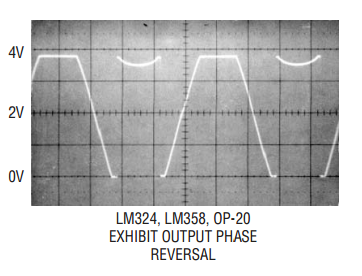Hi I believe this problem must be classical and well known but I cannot find a place where it is specifically discussed: I have build a simple non inverting 2X amplifier following exactly the classical and simple circuit as discussed for example in the answer to this question: Amplify 0 - 3.3V DAC signal to 0 - 10V as well as in many textbooks. I use a LF351DT opamp with Vs+=12V and Vs- to GND. and 2 10k resistor to get a 2X amplification. I feed it with a variable 0-5V DC and measure output. This is all there is in the circuit.
The circuit works as it should when the input is large enough (>~1.5V) that means Vout=2X Vin but for small value the opamp output is constant ~10V. I tried different chips ( same model) and this is reproducible. I cannot find a place where this effect is discussed. Does anybody have an idea on what's going on and how to deal with it? Thanks



